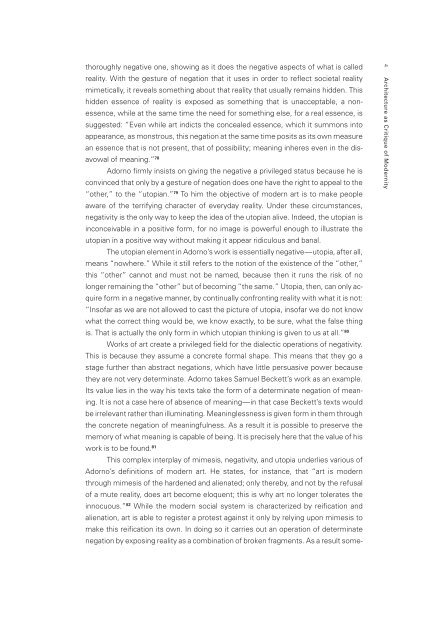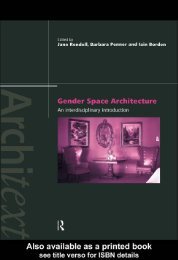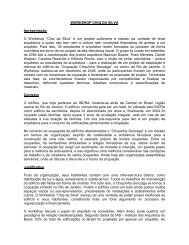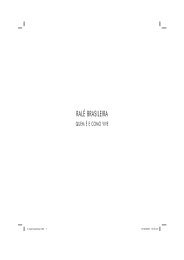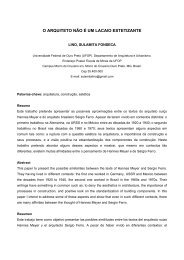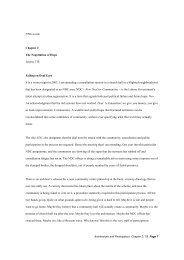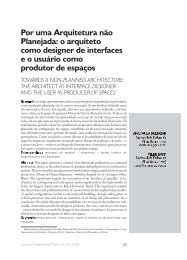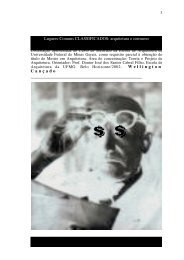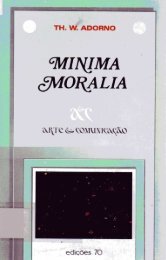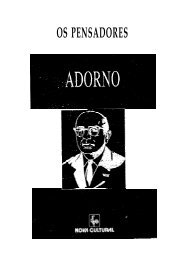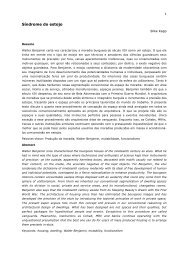Architecture and Modernity : A Critique
Architecture and Modernity : A Critique
Architecture and Modernity : A Critique
Create successful ePaper yourself
Turn your PDF publications into a flip-book with our unique Google optimized e-Paper software.
thoroughly negative one, showing as it does the negative aspects of what is called<br />
reality. With the gesture of negation that it uses in order to reflect societal reality<br />
mimetically, it reveals something about that reality that usually remains hidden. This<br />
hidden essence of reality is exposed as something that is unacceptable, a nonessence,<br />
while at the same time the need for something else, for a real essence, is<br />
suggested: “Even while art indicts the concealed essence, which it summons into<br />
appearance, as monstrous, this negation at the same time posits as its own measure<br />
an essence that is not present, that of possibility; meaning inheres even in the disavowal<br />
of meaning.” 78<br />
Adorno firmly insists on giving the negative a privileged status because he is<br />
convinced that only by a gesture of negation does one have the right to appeal to the<br />
“other,” to the “utopian.” 79 To him the objective of modern art is to make people<br />
aware of the terrifying character of everyday reality. Under these circumstances,<br />
negativity is the only way to keep the idea of the utopian alive. Indeed, the utopian is<br />
inconceivable in a positive form, for no image is powerful enough to illustrate the<br />
utopian in a positive way without making it appear ridiculous <strong>and</strong> banal.<br />
The utopian element in Adorno’s work is essentially negative—utopia, after all,<br />
means “nowhere.” While it still refers to the notion of the existence of the “other,”<br />
this “other” cannot <strong>and</strong> must not be named, because then it runs the risk of no<br />
longer remaining the “other” but of becoming “the same.” Utopia, then, can only acquire<br />
form in a negative manner, by continually confronting reality with what it is not:<br />
“Insofar as we are not allowed to cast the picture of utopia, insofar we do not know<br />
what the correct thing would be, we know exactly, to be sure, what the false thing<br />
is. That is actually the only form in which utopian thinking is given to us at all.” 80<br />
Works of art create a privileged field for the dialectic operations of negativity.<br />
This is because they assume a concrete formal shape. This means that they go a<br />
stage further than abstract negations, which have little persuasive power because<br />
they are not very determinate. Adorno takes Samuel Beckett’s work as an example.<br />
Its value lies in the way his texts take the form of a determinate negation of meaning.<br />
It is not a case here of absence of meaning—in that case Beckett’s texts would<br />
be irrelevant rather than illuminating. Meaninglessness is given form in them through<br />
the concrete negation of meaningfulness. As a result it is possible to preserve the<br />
memory of what meaning is capable of being. It is precisely here that the value of his<br />
work is to be found. 81<br />
This complex interplay of mimesis, negativity, <strong>and</strong> utopia underlies various of<br />
Adorno’s definitions of modern art. He states, for instance, that “art is modern<br />
through mimesis of the hardened <strong>and</strong> alienated; only thereby, <strong>and</strong> not by the refusal<br />
of a mute reality, does art become eloquent; this is why art no longer tolerates the<br />
innocuous.” 82 While the modern social system is characterized by reification <strong>and</strong><br />
alienation, art is able to register a protest against it only by relying upon mimesis to<br />
make this reification its own. In doing so it carries out an operation of determinate<br />
negation by exposing reality as a combination of broken fragments. As a result some-<br />
4 <strong>Architecture</strong> as <strong>Critique</strong> of <strong>Modernity</strong>


